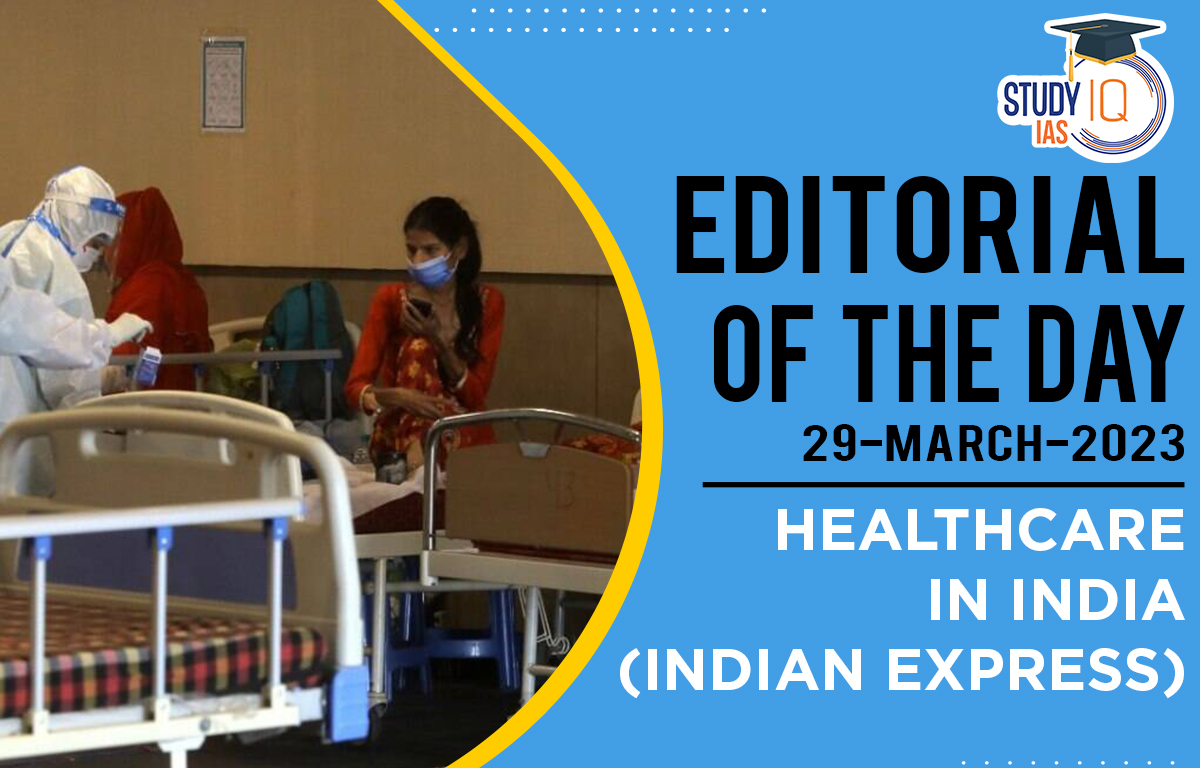Table of Contents
Context: Healthcare in India has made great progress as can be observed from the recent National Family Health Survey – 5 (NFHS-5), but challenges still remain. Rising obesity and lifestyle risk factors, huge variations in infrastructure across states and low health insurance penetration are among the problems that must be addressed.
Background
- The National Family Health Survey is a large-scale, multi-round survey conducted in a representative sample of households throughout India.
- Nodal agency: The International Institute for Population Sciences (IIPS) in Mumbai
- Objective:
-
- To provide essential data on health and family welfare for policy makers.
- To provide information on important emerging health and family welfare issues.
-
- Funding: It has been provided by USAID, the Bill and Melinda Gates Foundation, UNICEF, UNFPA, and MoHFW (Government of India).
Decoding the Editorial: The Challenges in Healthcare in India
- Rise of Chronic diseases
- They all share four behavioural risk factors
- an unhealthy diet,
- lack of physical activity and
- use of tobacco and alcohol.
- Deaths due to non-communicable diseases (NCDs) has increased from around 38 per cent in 1990 to 62 per cent in 2016.
- Obesity has increased from 19 per cent to 23 per cent between NFHS-4 and NFHS-5, in both urban and rural areas.
- This increases the risk of diabetes, hypertension, and Cardiovascular diseases (CVD).
- They all share four behavioural risk factors
- Gaps in the state of infrastructure
- Inter-state: There are huge variations between states. Some northeastern states like Mizoram, Arunachal Pradesh and Nagaland were found to have better arrangements followed by Gujarat and Chhattisgarh. The lowest proportions of primary health facilities with full institutional capacity were in Jharkhand, Karnataka and Uttar Pradesh.
- Urban agglomerations vs tier II and tier III cities: Just 16 per cent of the district hospitals in Tamil Nadu offered all key services. In states like Assam, Punjab, Madhya Pradesh, Mizoram and UP, it was found to be just 1 per cent.
- Over-dependence on private sector
- People have to bank on the private sector, which owns two-thirds of the country’s hospital beds.
- Large hospital chains like Apollo, Fortis, Max, and Narayana Hrudayalaya account for just 4-5 percent of the beds in the private sector.
- Standalone hospitals and nursing homes provide 95 percent of private hospital beds. Though these institutions provide a much-needed service, they are unable to provide multi-specialty, leave alone tertiary and quaternary care.
- Low health insurance penetration
- Despite the Ayushman Bharat insurance scheme for 10 crore poor families, several state-run insurance schemes, the Employees State Insurance (ESIC), group insurance and CGHS, millions still remain uninsured.
- Out-patient doctor consultation costs, diagnostics, and drugs account for the biggest chunk of out-of-pocket (OOP) personal expenditure. Presently this is pegged at 50 per cent of the total health expenditure.
- Use of Artificial Intelligence (AI) and digital technology
- It is an emerging concern. Surgery assisted by robots, the use of genetic codes, clinical judgements based on AI, and even pandemic forecasting are already widespread and are to be welcomed.
- But ethical and regulatory concerns abound, which recently prompted the Indian Council of Medical Research to release guidelines foreseeing the problems of a lack of accountability for machine-made medical decisions.
Beyond the Editorial: The NFHS-5 Survey results – achievements and failures
- Total Fertility Rate (TFR): India achieved a TFR of 2.1 (replacement rate) by 2020.
- Infant Mortality Rate (IMR): It has marginally declined in nearly all states. Assam has seen one of the largest drops in IMR, from 48 deaths (per 1,000 live births) to 32 deaths. IMR remains high in Bihar.
- Sex Ratio at Birth for children born in the last five years is below 950 for seven (of the 17) states.
- Women empowerment:
- Significant progress has been recorded between NFHS-4 and NFHS-5 in regard to women operating bank accounts from 53 percent to 79 percent at all-India level.
- Gender based violence still remains high. The graph shows the proportion of women who have ever faced spousal violence.
- Obesity: No state recorded a decrease in percentage of both men and women who are overweight or obese.
- Anaemia: More than half of the children and women (including pregnant women) are anaemic in all the phase-II States/UTs and all-India levels compared to NFHS4.



 Bharat Bandh 9 July 2025: Over 25 Crore ...
Bharat Bandh 9 July 2025: Over 25 Crore ...
 Mukhyamantri Majhi Ladki Bahin Yojana, O...
Mukhyamantri Majhi Ladki Bahin Yojana, O...
 Nipah Virus (NiV): Structure, Testing Me...
Nipah Virus (NiV): Structure, Testing Me...





















